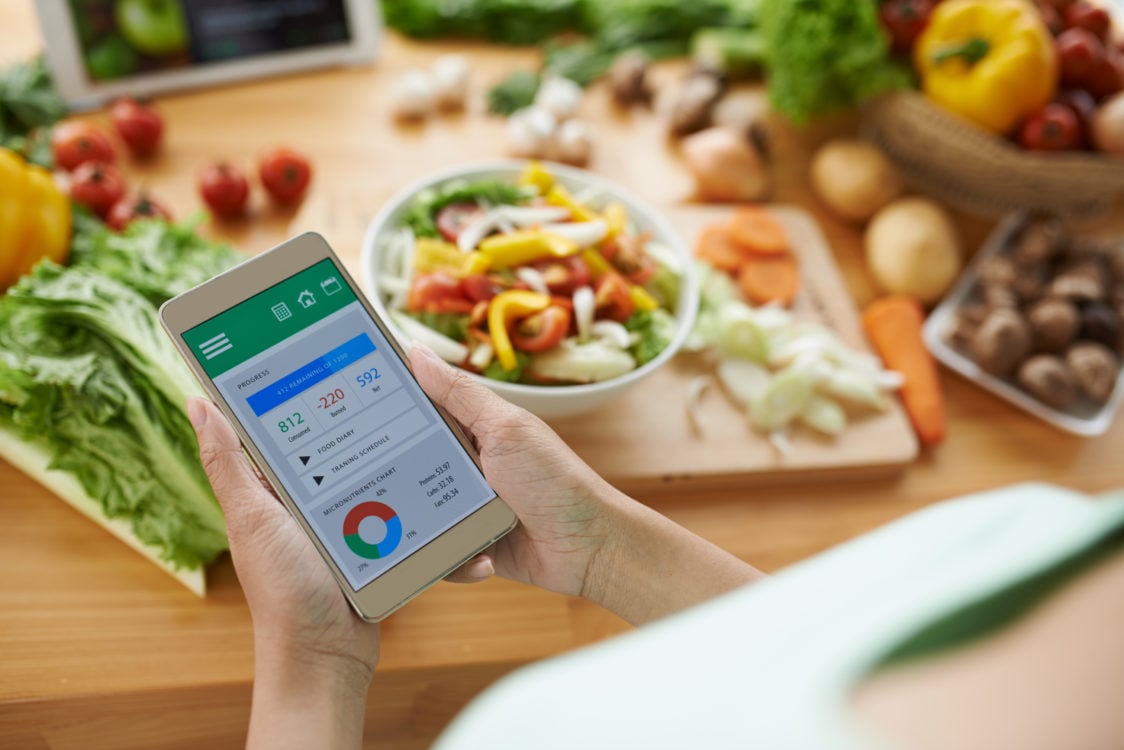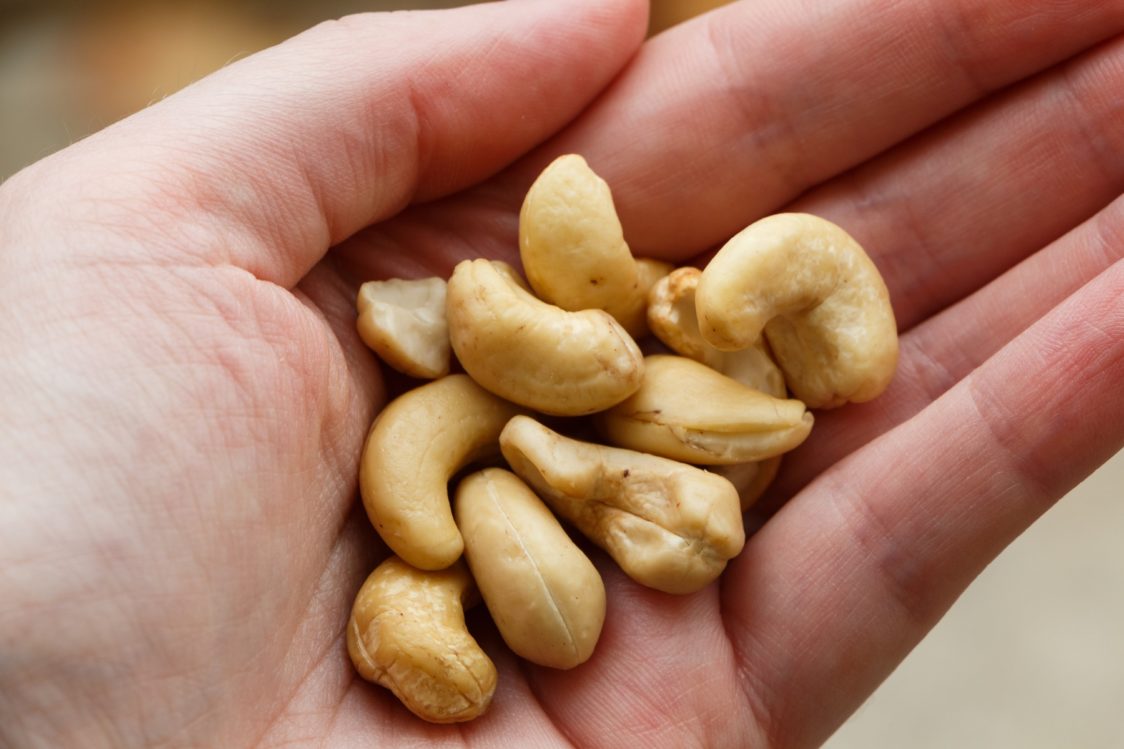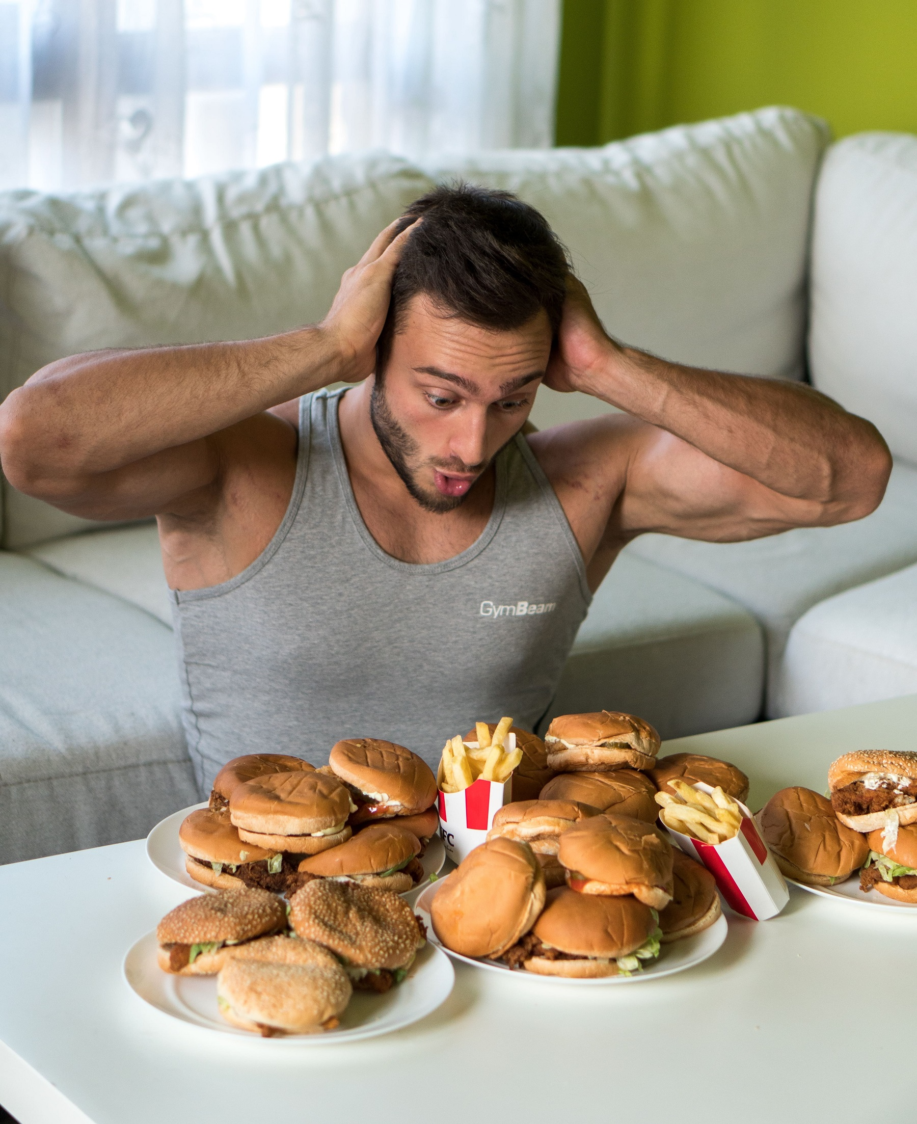Table of Contents
To have a burger, chocolate, wine, or ice cream on certain days and not gain weight, or even lose some of it. Does it sound like a dream and a wish of all the people who want to lose weight? Now, try to imagine that this dream can come true, and you can really eat whatever you feel like. Of course, there is a slight catch, you have to fit everything into your set intake of macronutrients, and therefore think about what specific foods are made of. Nonetheless, if you are willing to get over this minor discomfort, we can start with the introduction of the IIFYM eating style.
What does IIFYM stand for?
For you to best understand the principles of this style of eating, we have to start from the beginning and introduce you to the basic concepts. Let’s start with what lies behind the mysterious acronym IIFYM. It stands for“If It Fits Your Macros”. It, therefore, expresses the idea that a person can eat whatever kind of food they want unless it fits their macronutrients intake. You will learn more about its possible downfalls later in the article. [1]
IIFYM was not created as a new type of diet. This acronym was first used by bodybuilders on their discussion forums when they wanted to indulge in something “forbidden”. This designation was then passed on to the general public. [1]

What are macronutrients?
To complete our basic insight, we’ll talk about macronutrients. In general, we distinguish three basic macronutrients, which are proteins, carbohydrates, and fats.
1. Protein
Protein is a macronutrient that helps with bone health, muscle growth and also protects muscles from burning during the diet. It is therefore not surprising that this is not only vital for athletes. Its higher intake is often recommended during weight loss, not only for the above-mentioned benefits but also due to higher saturation and high thermal effect, which refers to the energy the body needs to process the nutrient. For proteins, depending on its type, the thermal effect is between 20-30%. This means that out of 100 calories, only about 70-80 kcal is absorbed into our body. [2][3][5][13]
Energy value of 1 g of protein: 4 kcal.
Protein sources:
- meat, fish
- eggs
- cottage cheese, yoghurt, cheese and other dairy products
- vegan meat substitutes (tofu, tempeh, Seitan)
- pseudo-cereals (buckwheat, amaranth, quinoa)
- legumes (lentils, beans)
- nuts and seeds
- protein powders (whey, plant-based)
- protein bars, protein cookies etc.
You can learn more about protein sources in the article 20 Foods with Which You Can Easily Add Protein to Your Diet

2. Carbohydrates
Carbohydrates are another major macronutrient. These are generally known primarily as a source of energy for the body. Most of the carbohydrates break down into glucose before entering the blood, which the body uses to make an energy-carrying molecule called ATP (adenosine triphosphate). It is then used for various metabolic tasks, such as normal daily activities or sports performance. Although the body can use fats to yield the necessary energy to drive ATP synthesis, for example, most cells prefer carbohydrates as their primary energy source. As to the thermal effect of carbohydrates, it is somewhere between 5-10%. [2–4]
Energy value of 1 g of carbohydrates: 4 kcal.
Carbohydrate sources:
- whole-grain cereals (oat and spelled flakes, flour, rice, pasta, pastries)
- pseudocereals (buckwheat, amaranth, quinoa)
- normal and sweet potatoes
- legumes (lentils, chickpeas, beans)
- fruits and vegetables

3. Fats

The last important macronutrient is fats. Like carbohydrates, they are important sources of energy and help support cell growth. Plus, fats also protect the body’s organs, help to keep body warm, and are also needed for the synthesis of hormones, including testosterone. There are even vitamins – A, D, E, K, which are fat-soluble. In case of insufficient fat intake, you may have a problem with their absorption. [6]
Energy value of 1 g of fat: 9 kcal.
Fat sources:
- seeds, nuts, and nut butter
- butter, ghee and oils (sunflower, olive, pumpkin)
- olives
- avocado
- fat, which is a natural component of animal protein (for example, fat in beef)
Calculate your ideal macronutrient intake
Now that we discussed the basic concepts, you can take the next step. Here you can determine specific values of macronutrients for your body, which will help you to reach some goal, such as weight loss. The easiest way is to use our macronutrient calculator, which will do all the work for you and calculate your macronutrient intake according to the data you enter. If you want to calculate it yourself, follow the steps in the article How to Calculate Energy and Macronutrient Intake for Weight Loss or Muscle Gain?
How much energy and macronutrients do you need?
Weightlifting in gym, circuit training in gym, crossfit, bodyweight training, street workout
Hockey, football, volleyball, basketball, floorbal, futsal, tennis, squash, table tennis
TRX, circuit training, body pump, aerobic and other classes led by an instructo’
Running, swimming, cycling, rowing
I lift weights
Weightlifting in gym, circuit training in gym, crossfit, bodyweight training, street workout
I play team or racquet sports
Hockey, football, volleyball, basketball, floorbal, futsal, tennis, squash, table tennis
I do demanding group trainings
TRX, circuit training, body pump, aerobic and other classes led by an instructor
I do endurance sports
Running, swimming, cycling, rowing
Pros and cons of IIFYM
Each coin has two sides, and so does the IIFYM. While it may seem perfect at first glance, it is not. So let’s take a closer look at its pros and cons, so you can objectively consider whether this type of lifestyle is really the best thing for your body. If you also know the dark side of IIFYM, you can quite possibly avoid the negative consequences, so that you will only benefit from its positives.
5 advantages of IIFYM
1. You will have an overview of the macronutrient composition of foods
If you decide to follow IIFYM, you will have to write calories down into some app such as MyFitnessPal. It already contains the list of preset foods that you should just add to your meal plan. On the other hand, there is also the possibility to write down your own energy value for the foods you enter. In this way, you should try to eat a predetermined amount of macros and thus get 100% of proteins, carbohydrates, and fats. You have to learn to work with individual ingredients, know how to sneak more protein into your food, or how to reduce the fat content in your dinner. For some, writing things down may be fun, for others it may be not. After a while, you lean to eyeball food serving sizes, so the process will become faster and more automatic. Maybe thanks to writing things down, you will also discover some hidden calories that you had no idea about before.

2. You get freedom with food choices
“I can’t have dinner with you tomorrow, I’m trying to lose weight and I have to follow my diet.” You will never have to say exactly this sentence again. If we were to characterize IIFYM in one word, it would definitely be flexible. This is a key aspect that so many people like. You don’t have to avoid social events, you can simply have whatever food you want, all you have to do is fit it into your intake, write it down, and adapt other meals to it during the day. The advantage is that most dishes of well-known restaurant chains have publicly available nutritional information.
For example, if you have a Double Whopper in Burger King, which has approximately 900 kcal, 50 g of carbohydrates, 56 g of fat, and 35 g of protein, you will probably realize that you have to cut down on fats when having other daily meals. Conversely, if you opt for a McDonald’s wrap with grilled chicken, you will supply the body with 350 kcal, 41 g of carbohydrates, 10 g of fat, and 26 g of protein, which might be a fairly balanced meal. This will make it easier to estimate your intake, and you will know whether you have to limit yourself to other meals you have during the day. And moreover, you might rather choose something else or share meal with someone to make sure it fits your macros.
You might be interested in these products:
3. You will get rid of the “all or nothing” mindset
Have you tried to lose weight in the past, but your efforts were thwarted by a celebration party where you had a piece of cake because you had already broken the plan anyway and everything is lost, so you decided to eat everything that was on the table? That’s exactly what won’t happen to you anymore. With IIFYM, there are no longer any forbidden foods which could violate your meal plan. From now on, you are allowed to enjoy any food. All you need is to watch its amount, so that you have enough macros for the rest of the day.
Thanks to IIFYM, you no longer have to be afraid of social events with a lot of irresistible food that would not fit into your diet plan. As we all know, forbidden fruit is always the sweetest, so it is quite possible that you will no longer be haunted by such cravings. The results of the studies also show that you will enjoy your food more if you do not regret it. [9]
And if you are interested in tips on how to snack in a smart way, you should have a look at the article 7 Tips on How to Snack and Not Gain Weight.

4. It can help you fight eating disorders
People who suffer from eating disorders are usually characterized by an unhealthy relationship with food, such as the fear that they will gain weight even after a small amount of unhealthy food. We are certainly not trying to claim that IIFYM is the solution to eating disorders. In the case of such a disease, the person should discuss their health condition with a specialist. However, IIFYM can be used to help a person realize that nothing will happen if they consume other foods than they are used to eating. [7]
5. The approach will be sustainable in the long run

If you have tried diets to lose weight in the past, were they sustainable for you in the long run? Probably not if you no longer follow them and are looking for another way to lose weight permanently. Finding a diet that restricts you from eating your favourite foods is not a long-term solution. And to start losing weight with the fact that you can endure it now, and when you lose weight, you can finally have a cake and a hamburger, won’t work either.
Most certainly, you won’t last long with such an approach, and if you do reach your dream weight, you may well encounter the yo-yo effect that comes soon after you return to your previous eating habits. And the result? You might gain not only the lost weight, but also some extra pounds.
With IIFYM, you don’t have to look forward to eating a cake in several months, but you can incorporate it into your meal plan in the first week. Your loved ones may not even know that you have started a new eating style, so you will avoid any possible remarks about your food, which could discourage you from trying to lose wight.
5 disadvantages of IIFYM
1. You can become a slave to calories
Of course, knowing what food contains is not a bad thing at all. If you are a perfectionist, it can easily happen that you start overthinking every calorie and every gram of a given macronutrient to make the macros fit you. But is it really necessary to eat exactly 83 grams of apple and throw away the rest? In the same way, you will know over time how much each food contains. Some may find these values informative, but if you think that you would become a slave to numbers based on that, which in the end would do you more harm than good, IIFYM is probably not your thing.
It will probably take you a lot of time to start from the beginning, you may not enjoy counting your macros, and it might even annoy you. Of course, it’s good to know that meat contains protein, but you don’t have to stress about the exact number. If you don’t like counting calories, and you feel bad about its idea, there are many other ways to lose weight effectively without having to stress about numbers.
2. You are at risk for developing an eating disorder
This point is quite closely related to the previous one. As already mentioned, each side has two coins. For some, IIFYM can teach them to eat the food they were previously afraid of, for others, counting macronutrients and calories may be a new obsession that will lead to an unhealthy relationship with food. The link between writing down food to fitness apps and the development of eating disorders has even been scientifically confirmed. Another study found that 73% of surveyed women with an eating disorder thought that counting macros of food had contributed to the development of the disease. [7–8]

3. Estimating food weight can ruin your progress

If you eat mostly at home and follow IIFYM, prepare your own food, then it should be an easy ride for you to weigh everything out. However, a problem can arise if you are just starting out with IIFYM, but you still don’t want to give up, for example, having daily lunches in restaurants. Sure, it’s possible to lose weight even if you’re eating out, but let’s be honest, do you really dare to estimate how many grams of rice, meat, and sauce you got on a plate in a restaurant at the beginning of IFFYM?
Deliberately try to do a test at home: ask someone to give you a portion of food, and you estimate how much there is on the plate. You may be surprised that your values will differ from the real ones by hundreds of grams, and this will be really bad for your daily caloric intake.
Of course, you can take a scale into the restaurant and weigh the food, but this approach will definitely not lead to a healthy relationship with food, so take it as an exaggeration. This is important only for athletes just before the competition, but they will probably not eat in restaurants during this period, where they would not have 100% control over food.
So if you want to eat out right from the beginning of IIFYM, try to choose a restaurant that indicate meal weight on the menu, and this will help you estimate the portion more easily. Another option is to order food at home, where you can eat without looking crazy with the food scale, and you can leave the rest of the portion, which would significantly exceed your macros, for another family member or as leftovers. Unfortunately, the energy balance is relentless. And just because you didn’t write down the food information to your app doesn’t mean you didn’t eat it. Think about it and try to be as accurate as possible.
4. Lack of vitamins and minerals
Relying on macronutrients, which are vital IIFYM, is one thing. But don’t forget about important micronutrients, whose long-term deficiency could have a negative effect on the body. According to research, in modern diets, it often happens that at least some people have deficiency of certain vitamins or minerals. It is therefore quite probable that this deficit could occur even in people who do not take care of sufficient intake of fruits, vegetables and deal only with calories. [10–11]
Research to analyse micronutrient deficiencies in people following IIFYM has not yet been conducted. Yet, it is important to mention that there are countless ways to approach this diet. If you supply your body with mostly poor quality food, then you are also at risk of having vitamin or nutrient deficiency. You can deal with it by following the so-called 80/20 rule together with IIFYM. This means that approximately 80% of your daily caloric intake should come from the quality foods we mentioned above, and the remaining 20% can come from goodies that will please your soul, such as sweets, fast food, and so on.

5. It does not take into account overall health
If you have any health restrictions, keep in mind that IIFYM does not take them into account. For example, do you have to avoid food due to intolerance? Or do you have kidney problems or diabetes? Then you need to think about that even if you want to follow IIFYM. Of course, it is possible to combine this approach with some restrictions, and it is necessary to choose the foods that can you include in your eating plan. However, it is best to consult your doctor about following a diet according to IIFYM rules.
Right vs. wrong concept of IIFYM
Based on the information above, you should already have an idea of how to go along so that IIFYM becomes a predominantly healthy, effective, and long-lasting eating style for you. For even greater clarity, we will show both good and bad example of following IIFYM diet.
As an example, we will use two women (let’s call them Sarah and Iva), who are both 22 years old, height 170 cm, weight 70 kg, would like to lose weight, have a sedentary job, and do 2 hours of demanding circuit training a week.
The recommended daily calorie intake for weight loss according to macronutrient calculator is as follows: 1826 kcal, carbohydrates: 223 g, protein: 119 g, fat: 51 g.
The right concept according to Sarah
- Sarah knows that her body needs quality nutrients, so she decided to stick to the 80/20 rule along with IIFYM. This means that she has set aside approximately 370 kcal (20%) of her daily intake for goodies that are not so nutrient-dense and beneficial.
- Because she is an ice cream lover, she decides to invest these calories in Magnum with white chocolate, which has 259 kcal.
- She still has 111 kcal left to please her taste buds, so she adds the tartar sauce she loves so much (specifically 25 ml, which corresponds to 100 kcal) to her lunch.
- She tries to ensure that the remaining meals are made of quality ingredients.
- She usually eats porridge for breakfast, so she writes down her regular portion into the calorie count app.
- Since she uses meal prepping, she has already prepared a lunch portion and wrote it down to calorie count app.
- She hasn’t decided what to have for dinner yet. However, she knows in advance that she would fit it in her macros, so she will be able to indulge in a quality balanced meal.
- Before preparing the dinner itself, she writes down the individual ingredients she uses, and adjusts their weight to supplement the necessary macronutrients.
- At the end of the day, she takes care of having at least two pieces of fruit and 600 g of differently coloured vegetables to supplement the necessary micronutrients. Thanks to this she could eat 31 grams of fiber. This corresponds to the recommended intake for a woman, which should be at least 25 g. [12]
The wrong concept according to Iva
- Iva decided to stick to the motto that if the food she wants to eat fits into the macros, that’s all right.
- She doesn’t like planning, so she doesn’t think about food in advance, she eats what she wants.
- She did not deal with breakfast, morning snacks, and lunch. Then she took a bag of gummy bears in the afternoon and only then decided to write everything down in the macro tables.
- She was horrified to find out how few macros she should still consume. She quickly took a whole package of cottage cheese to get enough protein.
- For dinner, she had some protein shake, 8 grams of cashew nuts, and went to bed with an upset stomach and severe hunger.

What did their final eating plan look like?
Sarah’s meal plan
- All ingredients are listed raw.
- Breakfast: Porridge (40 g), semi-skimmed milk (150 ml), banana (90 g), Skyr 0.1% fat – 397 kcal, 29 g protein, 59 g carbohydrates, 5 g fat.
- Lunch: Chicken breast (150 g) baked with potatoes (200 g), broccoli (300 g), egg (piece 63 g), tartar sauce (25 ml) – 640 kcal, 57 g of protein, 58 g of carbohydrates, 20 g of fat.
- Afternoon snack: Magnum with white chocolate (piece 86 g), apple (100 g) – 307 kcal, 3 g of protein, 40 g of carbohydrates, 15 g of fat.
- Dinner: Semolina pasta (80 g), cucumber (100 g), tomato (100 g), yellow pepper (100 g), smoked tofu (100 g) – 483 kcal, 30 g of protein, 66 g of carbohydrates, 11 g of fat.
- In total: 1827 kcal, 119 g of protein, 223 g of carbohydrates, 51 g of fat, 31 g of fiber.
Iva’s meal plan
- All ingredients are listed raw.
- Breakfast: Nesquik cereals (50 g), chocolate protein (30 g), semi-skimmed milk (200 ml) – 390 kcal, 34 g of protein, 50 g of carbohydrates, 6 g of fat.
- Morning snack: Snickers bar (50 g) – 248 kcal, 4 g protein, 31 g carbohydrates, 12 g fat.
- Lunch: Twister from KFC (226 g) – 551 kcal, 25 g protein, 52 g carbohydrates, 27 g fat.
- Afternoon snack – low-fat cottage cheese (250 g), gummy bears (100 g) – 505 kcal, 37 g protein, 87 g carbohydrates, 1 g fat.
- Dinner – chocolate protein (25 g), cashew nuts (8 g) – 145 kcal, 21 g protein, 4 g carbohydrates, 5 g fat.
- In total: 1839 kcal, 121 g of protein, 224 g of carbohydrates, 51 g of fat, 5 g of fiber.
How to plan your meals with IIFYM?
As we have shown in the example of Sarah and Iva, there are more ways to approach IIFYM. But if you are not ignorant about your health, you should, at least from the beginning, plan most of your daily meals so that you could consume enough calories at dinner (not like Iva), and have sufficient intake of fiber and micronutrients. In the long run, such a diet would not be sustainable for you – either you would eat in the evening, go beyond your macros, and thus move away from your dream goal, or you would starve. But you don’t want that, so some time later you would probably give up IIFYM anyway and go back to your old eating habits. To have an easy start, try applying our simple tips.
5 tips to help you get started with IIFYM
1. Keep track of macronutrient sources
If you are starting to count calories and macronutrients, it is quite possible that you do not yet have a complete overview of what each food contains. It does not matter. Write down the sources of individual macronutrients from the beginning of our article on a separate paper, which you would always have on hand. Then, when your app shows that you lack protein, for example, all you have to do is read the list, check what you have in the fridge, and it will be easier for you to prepare the final meal right away.
2. Plan at least some meals in advance
If you are starting with IIFYM, you will probably not be able to estimate your portion size yet. In order for everything to suit you, it is better to plan your meals in advance. If you know you eat 4 meals a day, you can at least have lunch and dinner ready. When you get up in the morning, decide what will you eat, write down the food in the app, and you will be left with the remaining macronutrients for a snack or some other favourite food.

3. Create your customized food database
I guess most of you don’t have a different breakfast every day throughout the year. You probably have a few of the breakfast favourites you prepare during the week. And it might be the same for lunch and dinner. If so, you can simplify the whole writing process by saving the list of your favourite foods. Thanks to this, you will eventually create your own database of dishes, which will greatly simplify the whole process. Then you always just adjust the specific weight of raw ingredients that you ate that day, and that’s it. No science.
4. See the restaurant menu at home
If you know you have to go to lunch with friends, try to look at the menu at home. Most restaurant indicate portion weight there, thanks to which you can more easily enter it in the tables. Think about the food you have chosen for the day in the restaurant and adapt the other dishes accordingly. You know, for example, that you will have spaghetti Aglio olio for lunch? Great idea, but keep in mind that this food does not contain much protein. You will therefore need to supplement it with another meal.
5. Don’t try to be accurate at all costs

In order to see results, you need to follow the macros, that is clear. But if you have a party once a month, you don’t have to carry a kitchen scale and weight foods. This is not what life is about. If you know that a family reunion is happening in the near future, try to think of what food you most often reach for on the table. Do you usually eat pastries, ham, and vegetables? Then try to estimate the approximate amount, write it down, and you don’t have to worry more, take it as your normal day.
Are you more of a sweet-tooth person, and know that you can’t resist chocolate goodies on the table? All right, you just need to prepare for that. Buns and desserts are usually rich in carbohydrates and fat. So, before and after the celebration focus on replenishing the necessary proteins and calories, and “save” fats and carbohydrates for the celebration. You can then try to estimate the amount eaten and write it down. As you get familiar with this diet over time, you will become more and more accurate. And if once a month you slightly go beyond your macros at the party, nothing will happen, you will not gain a pound of fat, and do not stress.
What to remember
IIFYM is a fairly specific eating style that is definitely not for everyone. Before you start, you should thoroughly learn more about individual macronutrients, calorie counting apps, and also consider whether it is really the best option for you. If you have had an eating disorder in the past, you should discuss IIFYM with your doctor – it might be helpful for some people, while for others, the disease might make a comeback due to calorie restriction. Likewise, it is not your thing, if you don’t like tables, numbers, graphs and don’t want to weight your food.
And on the contrary, IIFYM can be a great choice for people who are trying to lose weight, stick to a strict diet, like to write down everything, and would like to indulge in goodies that most diets usually restrict. Ideally, try to follow the 80/20 rule to be sure that you supply your body with quality nutrients, and you do not end up like Iva, who ate sweets, fast food during the day and for dinner, she was left with few macros to fit only protein shake and 8 g of nuts.
Does IIFYM work for you? Share your experience with us in the comments below, and also share your tips on how to make counting of macros as easy as possible.
[1] What is IIFYM? – https://examine.com/nutrition/what-is-iifym/
[2] Thermic Effect of Food – https://examine.com/topics/thermic-effect-of-food/
[3] James Hill, Wyatt, H. R., & Peters, J. C. – The Importance of Energy Balance – https://doi.org/10.17925/EE.2013.09.02.111
[4] M Elia, P Folmer, A Schlatmann, A Goren, S Austin – Carbohydrate, fat, and protein metabolism in muscle and in the whole body after mixed meal ingestion – https://pubmed.ncbi.nlm.nih.gov/3374320/
[5] Commission Regulation (EU) No 432/2012 of 16 May 2012 establishing a list of permitted health claims made on foods, other than those referring to the reduction of disease risk and to children’s development and health – https://eur-lex.europa.eu/eli/reg/2012/432/oj
[6] Know More about Fat – https://www.chp.gov.hk/en/static/100023.html
[7] Diagnostic And Statistical Manual Of Mental Disorders, Fifth Edition – https://doi.org/10.1176/appi.books.9780890425596
[8] Cheri A Levinson, Laura Fewell, Leigh C Brosof – https://pubmed.ncbi.nlm.nih.gov/28843591/
[9] Ben C Fletcher, Karen J Pine, Zoe Woodbridge, Avril Nash – https://pubmed.ncbi.nlm.nih.gov/17055111/
[10] Christopher D Gardner a kol. – https://pubmed.ncbi.nlm.nih.gov/20573800/
[11] Jayson B Calton – https://www.ncbi.nlm.nih.gov/pmc/articles/PMC2905334/
[12] Dietary Reference Intakes For Energy, Carbohydrate, Fiber, Fat, Fatty Acids, Cholesterol, Protein, and Amino Acids – https://www8.nationalacademies.org/onpinews/newsitem.aspx?RecordID=s10490
[13] Margriet S. Westerterp-Plantenga a kol. – Dietary protein – its role in satiety, energetics, weight loss and health – https://www.cambridge.org/core/journals/british-journal-of-nutrition/article/dietary-protein-its-role-in-satiety-energetics-weight-loss-and-health/CCA49F7254E34FF25FD08A78A05DECD7


Add a comment